For December 2022’s spotlight on world eco-fiction, I’d like to celebrate our ten-year birthday with a look back at our spotlights and interviews throughout the years.
Tidbits
Here’s some interesting statistics from the past ten years:
- I’ve done 134 interviews, some with traditionally popular authors and some with indie authors. I see Dragonfly’s interview series not as sharks and minnows but as several awesome fish in the sea who are all important to the literary ecosystem.
- I began mapping where stories were set at the start of the World Eco-fiction: Climate Change and Beyond series, which began in 2016. This series has 54 interviews so far, and is growing.
- The mapped countries include those from all continents, though most pinpoints are approximate. The number of stories in each country is as follows: New Zealand (1), Australia (5), Japan (2), South Korea (1), China (2), Russia (1), Mongolia (1), Taiwan (1), Vietnam (1), Thailand (1), Philippines (1), Sri Lanka (1), Myanmar (1), India (3), Saudi Arabia (1), Uzbekistan/Kazakhstan border (1), South Africa (3), Botswana (1), Kenya (1), Nigeria (1), Ghana (1), Spain (2), Portugal (1), Malta (1), Greece (2), Italy (1), Switzerland (1), United Kingdom (2), Ireland (1), Norway (1), Greenland (1), Canada (6), US (10), Cuba (1), Jamaica (1), Dominican Republic (1), Haiti (1), Columbia (1), Brazil (3), Argentina (1), and Chili (1).
- Other stories not in the world series include places like a speculative Scandinavian Union, fantasy worlds, and real or made-up worlds on Earth and on other planets.
Future Plans
The world eco-fiction series will continue indefinitely. One future change is that some features will be articles instead of interviews. It’s hard to line up an interview every month, and my time is also busier than it used to be. I’m working in a full-time career and have a growing family, a meadow of new trees and plants that needs to be tended, and more novels to write. If you are interested in being interviewed for the series, please see the Submit menu link at the top of the site and scroll down to the “Book Spotlight and Reviews Submissions” section. Another future plan is to spotlight film, game, and poetry authors or producers. They provide powerful fictional stories that can inspire us to care more about the natural world and our place in it.
The World Eco-fiction Spotlights
In order to recap the past spotlights, I adapted some questions from Rebecca Graf’s Medium article. I will not answer all her 101 questions.
Tell us about your world eco-fiction series.
The series originated from a few previous interview or spotlight series, specifically the original climate-change author spotlight series and an older series called “Women Working in Nature and the Arts”. I rolled these collections up into the newest series several years ago
Where did the idea come from?
Originally, I was interested in author perspectives and why a writer would decide to delve into art, or novels in this case, that deal with ecologically oriented subject matter. A lot of people see eco-fiction as its own genre, but I like to think of it as a composite subgenre wherein the plot and characters interact with the wild around us and don’t forget nature as a necessary character. I’ve also poked into stories you wouldn’t think of as environmental, with an eco-critical glance upon their dependence on the natural world, even if the stories are not polemics.
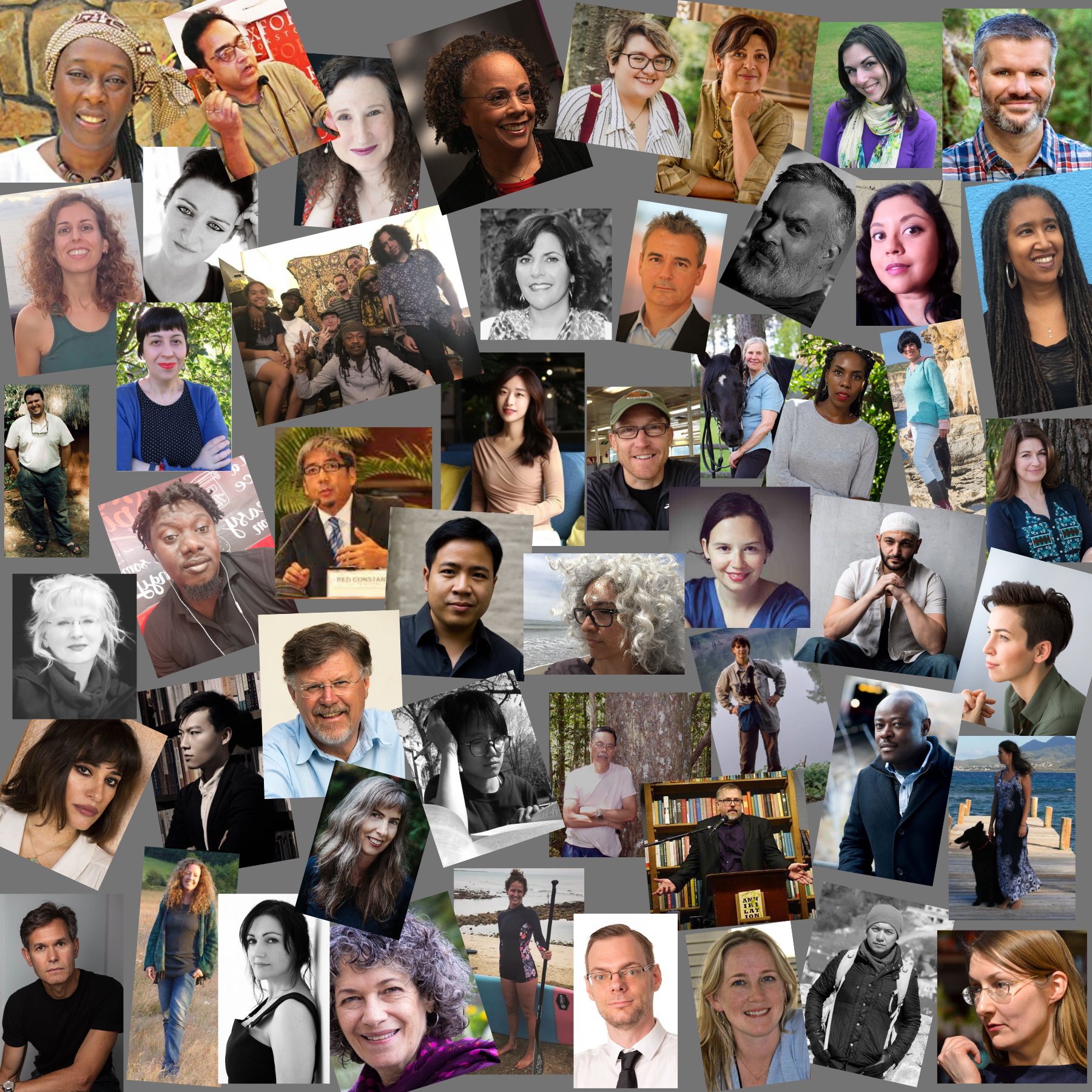
I also wanted to extend my previous series into a new focus where I would look at stories around the world. Every place’s natural landscape and biodiversity is threatened. Every place has experienced colonialism that jump-started their inhabitants’ path to an unhealthy everything change, including people, and all species, being forced off their lands and dislocated, killed, or enslaved. That pathway, caused by greed, diverted from previous dependence on natural environments and increased need for built environments, power, control, wealth, and consumerism. There’s so many issues that eco-fiction deals with world-wide, including diaspora and the loss of land, language, traditions, art, and so much more. These objects tie in together. The stories I am interested in don’t forget the natural world, and the spotlight series I imagined would take a peek at different places around the world and find out what stories were emerging from those places, and, not the least, give dignity to those places. Climate change and loss of natural environments is a global problem, but various localities experience it differently. Areas contributing the least to climate change often experience the worst.
What are some of your favorite interviews?
I don’t have any favorites, but in some interviews I felt the authors taught me something I didn’t know. One was my coverage of Evie Gaughan and her story The Storyteller, which took place in Ireland. I had just returned from Ireland and found the book, and cozied up with it over a few nights of reading. She told me something about a hawthorn tree that I didn’t know:
The hawthorn tree is a sacred tree in Ireland. They grace every hedgerow and woodland across the country, blooming majestically with little white flowers every May. On many farms, you will come across a large, open field with animals grazing and one solitary tree providing welcome shelter. This will undoubtedly be a hawthorn, because no farmer would dare take a saw to it for fear of bad luck. Farmers are the true guardians of the land and her secrets, and that is why I wanted Anna and her family to be a part of that tradition.
My interview with Mohammed Ahmed, about an anthology called After Australia, was eye-opening. He not only edited the anthology, which was superb and dominated by Indigenous authors, but he provided some beautiful photos to illustrate the interview and does a lot of good work, like with the Sweatshop literacy movement.
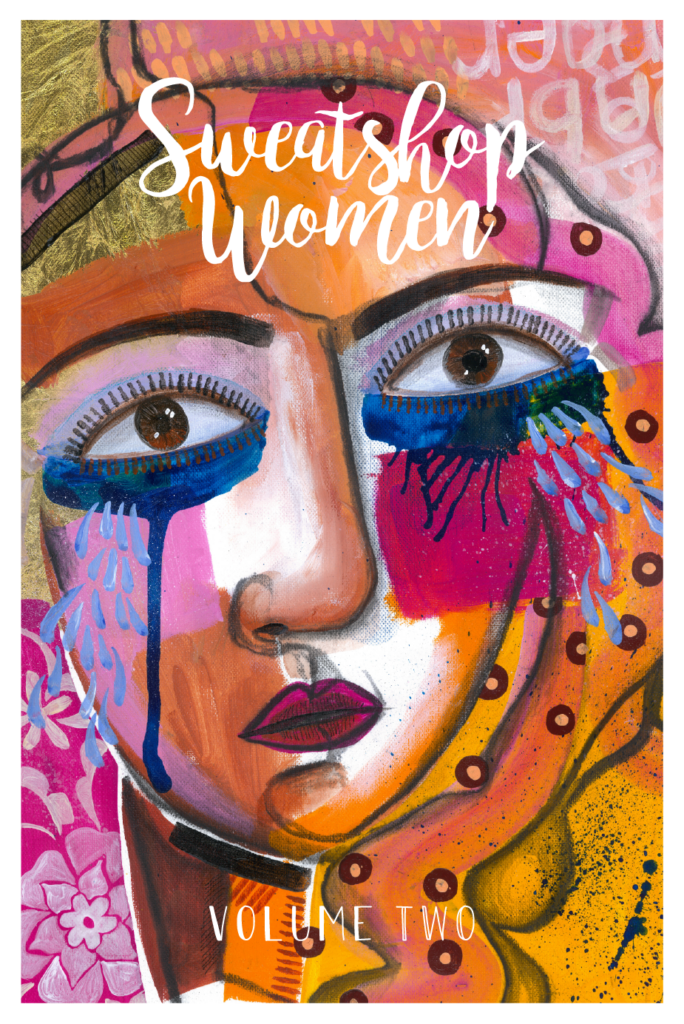
I’d read a climate short story (“Eclipse Our Sins”) by Tlotlo Tsamaase that blew my mind because it was an artistic, poetic, mind/genre-bending story. It was totally outside what I’d read before, and so when I reached out to her and she responded, I was thrilled to get a chance to talk with her about that story and her other work, such as her novel The Silence of the Wilting Skin.
There’s so many authors who I couldn’t believe actually responded to me at all; I’m beyond grateful to everyone for giving me their time.
How long does it take to prepare for an interview?
Normally I spend about two hours reading a book or reviews (if the book isn’t out yet or I can’t find it) before even deciding to talk with the authors. If I like what I’ve read, I reach out to the author, and if there is a positive response, further communication and coming up with questions takes another hour or so. And then there’s another hour that goes into editing and posting the spotlight, which gets scheduled to post on a certain day.
Where do you get ideas for authors you cover?
I am always looking for books to post at Dragonfly.eco. I search for books with themes around nature, trees, animals, water, fungi, you name it. If something looks good to me, I check it out further and then finally contact the author or publisher if I end up liking the book.
Name at least a couple novels that depict localities affected by climate change and other human-made ecological disasters.
I would say all of the stories in my interviews take place in areas that have been affected by our impact on environment. But I’ll give a couple examples.
One is Wu Ming-Yi’s beautiful story The Man with Compound Eyes. He told me:
Many years ago I read about trash vortexes in North Pacific. Even without photographic pictures, a sequence of imaginary scenes kept hunting me night and day. As time passed, those scenes became interconnected and turned holistic in my mind. It reminded me of the place where I had lived, Hualian. Hualian was a small city facing the Pacific. I have stood there and watched birds fly. Then the idea came to me that, maybe one day, all the garbage would fly through the shore to meet their creators—us. In addition, with my understanding of climate change and my passion for the sea, I started the story’s first chapter.
The author also talked about how climate change has affected Taiwan.
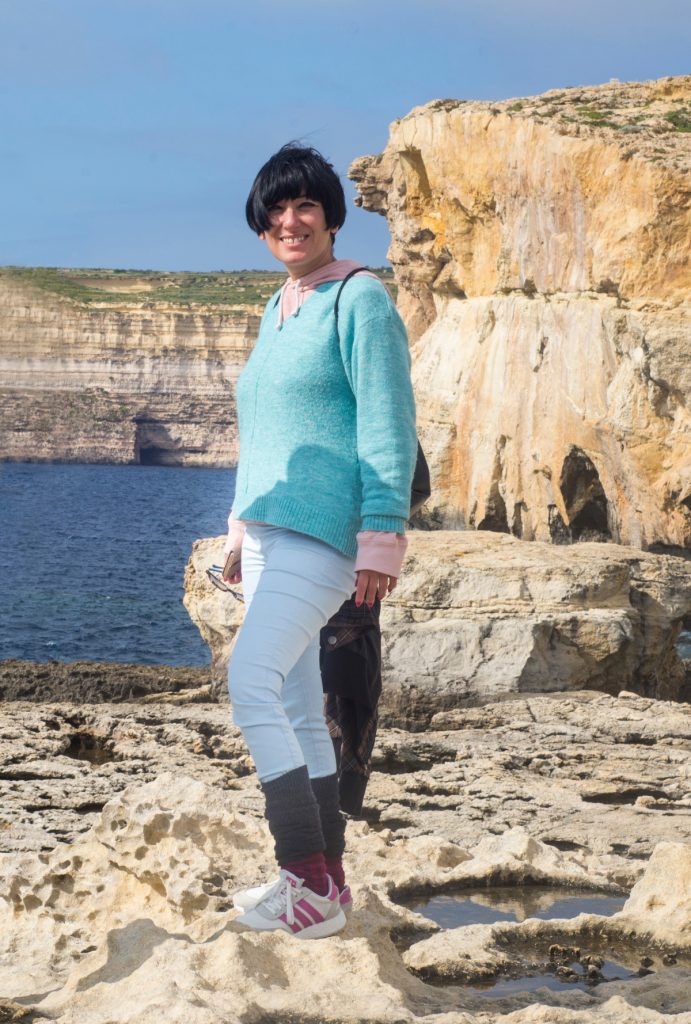
Also, Loranne Vella wrote this brilliant novel, Rokit, which we discussed. The novel is set in Malta, and Loranne told me:
I created this image of the future of Europe and Malta by asking a basic question: what if we’re actually moving toward a future where we lose, or even give up voluntarily, the very things we hold so dear today? Democracy, a unified continent, independence, telecommunications, freedom of movement, freedom in general. What if we will actually dismantle all we’ve been building this past century to reinstate that which we spent decades striving to liberate ourselves from; what if we will once again opt for borders to open territories? What if we were to find comfort, once again, in isolation? Albert Cauchi, the fictitious historian in the novel, comments in detail about this phenomenon is his work titled “Min jibni u min iħott” (“Those that are busy building, and those that are busy dismantling”). History, according to Cauchi, proves that time moves in circles, spirals even, and that man is bound to repeat past mistakes, making them even grander next time round.
Best writing tips received from spotlight authors?
I think constantly about my chat with Cory Doctorow, about his novel Walkaway; he brings up a positive side of disaster, where he said:
We have a narrative about how disasters unfold, that when they occur people turn on each other and attack each other and loot and pillage. It’s a widely accepted idea and is something that appears a lot in fiction too. It’s often a lazy trope of fiction, that a breakdown in technology or a natural disaster immediately spurs a breakdown in civil order. But as [Rebecca] Solnit shows, by examining contemporary first-person accounts from these disasters, by and large, people are incredibly good to one another in times of crisis.
I think it’s crucial that writers understand that our dystopian world is depressing to read about, and the tropes in fiction dealing with that don’t have to be grimdark and full of doom and gloom. Neither, however, is passive hope a thing to get excited about. We need action along with hope. I still like to believe that most people are good-hearted and resilient and help their community when a bad thing happens. I love stories where the real heroes aren’t wearing capes but are regular people fighting the good fight. That allows us to approach dystopia with courage and fearlessness. It allows us to see a better world as something possible, something we can take part of.
Also, when I talked with Jeff VanderMeer, he told me some things about author intent and world-building—in this case within weird fiction. He said:
These are in a sense transitional forms, between animal and plant, that are incredibly complex and which we don’t quite understand in all of that complexity just yet. So often it’s not that you go out to explore ecology through weird fiction, but that the weirdness of the real world suggests certain impulses in your fiction. The Southern Reach is just the most personal exploration, and thus the dark ecology content probably is more intense and more front-and-center. This is largely because the setting is highly personal—North Florida wilderness—and certain elements, like the (at the time) seemingly endless spiral of the Gulf Oil Spill that kind of took up residence in my subconscious.
What was the biggest challenge you faced while lining up interviews?
In the past ten years, I’ve had two authors agree to an interview but then become unresponsive to me when I followed through with questions after reading their books. Because this site is a hobby and my world is also busy with work, family, and other hobbies, I find it disrespectful when people do this with no explanation. But, by far, the majority of authors are kind and wonderful to work with, so the spotlights here have been an overwhelmingly positive experience, not just for me but for readers.
What kind of research did you have to do to find authors to talk with?
I visit their website and social media to find out more about them. I also either read their book(s), or reviews about books, and watch any readings or other videos they’ve made. Before interviewing Lidia Yuknavitch, I watched a really interesting TED talk she did. I identified with her due to some hardships she talked about, but in our interview, she was so friendly and down-to-earth, I felt I’d met a kindred soul.
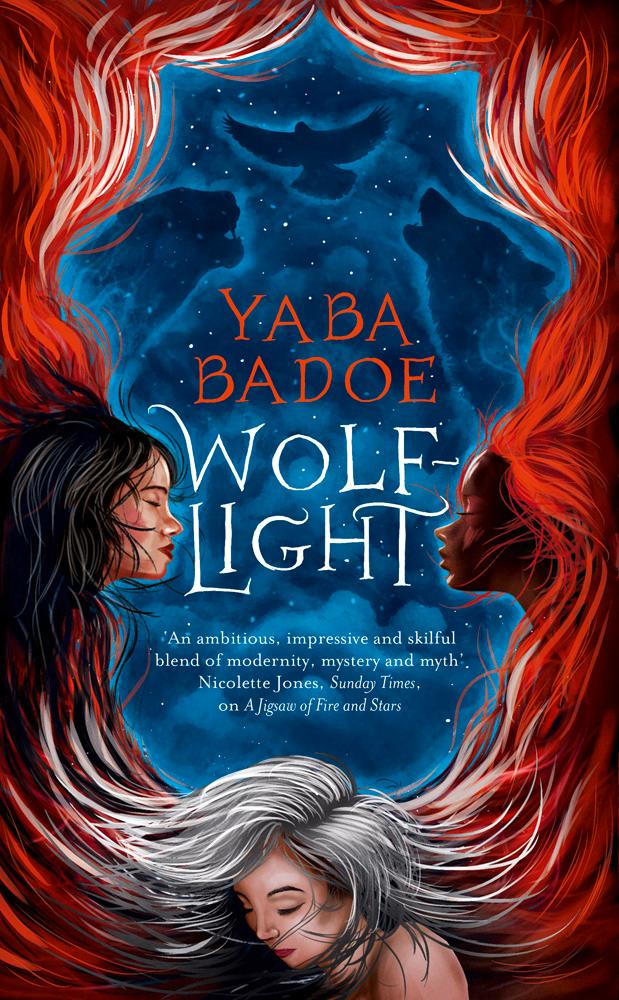
Before reaching out to Yabo Badoe to talk about some of her books, particularly Wolf Light, I watched this fascinating film documentary she did called The Witches of Gambaga. Talk about learning something new.
Oh, and this happened after the fact, but I recently thought about my spotlight on Yun Ko-eun and her novel The Disaster Tourist. It’s really a thing, disaster tourism, and just recently I watched a Netflix series called Dark Tourism, and I’m like…people do that? It reminded me of my chat with Yun.
What are your thoughts on art vs. the commercialism of publishing?
As for the art and craft itself, Ursula K. Le Guin said (and I agree):
I think hard times are coming, when we will be wanting the voices of writers who can see alternatives to how we live now, and can see through our fear-stricken society and its obsessive technologies, to other ways of being. And even imagine some real grounds for hope. We will need writers who can remember freedom: poets, visionaries — the realists of a larger reality. Right now, I think we need writers who know the difference between production of a market commodity and the practice of an art. The profit motive is often in conflict with the aims of art. — National Book Awards speech, 2014
Who is your favorite author in this series?
I don’t have a favorite author in this series. I like them all, or I wouldn’t have wanted to talk with them. And there’s many more I like who I hope to chat with someday.
What drives you to continue this series?
It’s my way of connecting to authors I admire and finding out more about them. I know that readers like these spotlights as well. There’s endless stories about our natural world, and there always will be, so I guess I’ll continue doing this until I get too old to do it anymore.
Which authors do you consider a role model?
A lot of them! One is Neus Figueras, who grew up in Spain, which is a place I always wanted to visit. She wrote a children’s book, Lorac, that was inspired by an Indigenous community of sea nomads that she met while restoring coral reefs in Myanmar. That kind of work is so fascinating. And, like me, she loves the ocean.
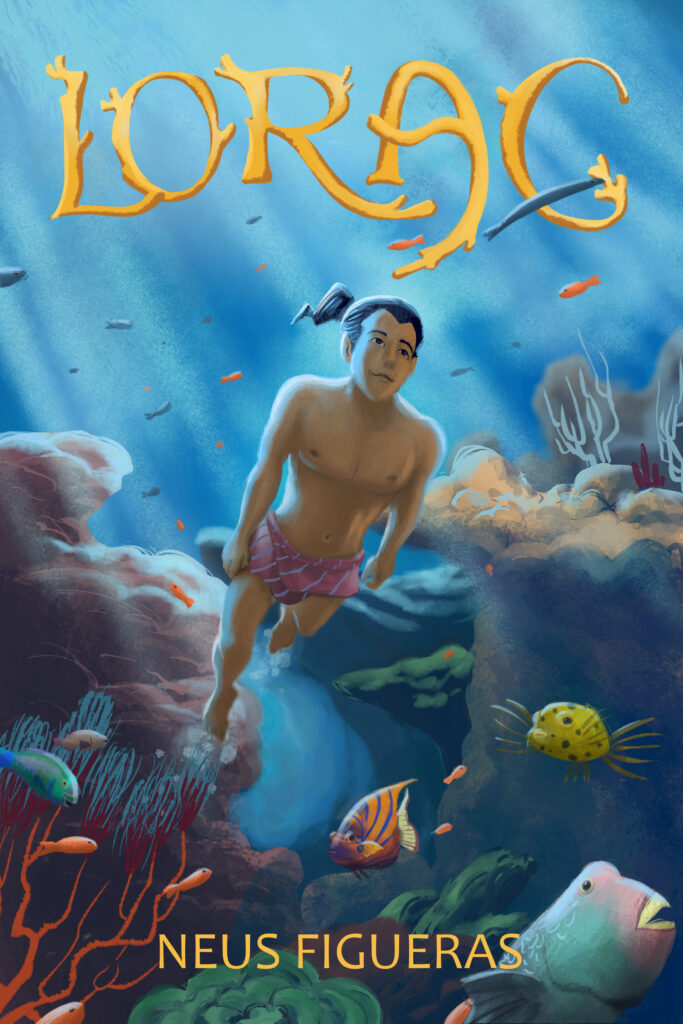
Another author is Melissa Volker, who knows a lot about ecosystems, especially marine ones, in South Africa. She likes to surf, and though I learned how to once, I never took it up. It’s still kind of a dream of mine to have that lifestyle. Another is Aya de León, author of several romance-heist novels, including Side Chick Nation, a story set after an island hurricane, who told me her biggest hope was to “inspire people of color to see themselves as climate activists and part of the movement for climate justice.” And, though I interviewed Nina Munteanu long before the world eco-fiction series, her writing has meant a lot to me. She’s also a Canadian and a limnologist, so she knows so many cool things about water and knows how to communicate scientific ideas creatively in fiction. These women all wrote fascinating stories about water, which is a muse to me, so maybe that’s one of the reasons why they personally inspire me.
If could meet anyone in the series, who would it be?
I’d love to meet Marian Womack, who I interviewed a couple times about her collection of short stories, Lost Objects. She is from Spain and wrote some shorts set there. I was always fascinated that she did her doctorate studies on the intersection between ecology and the weird, which I have been interested in for a long time. I’d love to pick her brain and learn more.
I found it enlightening to talk with Redentor Constantino, editor of the AGAM project, a Filipino collection of stories, essays, art, and poetry dealing with climate change. We started talking several years ago, and I finally included him the series in 2018. AGAM Agenda has done another book, and it’s very artistic and beautiful, but underneath is the poetic telling of stories by people actually living through some of the worst climate disasters on the planet.
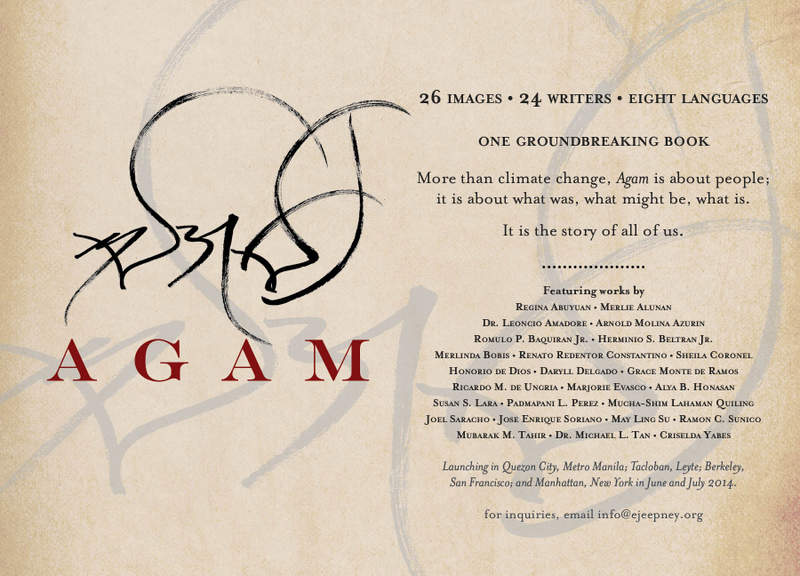
I would really love to meet all the authors, but one more to mention is Jewell Parker Rhodes. I personally connected with her teen novel Paradise on Fire, which is about a inner-city Black girl who had lost some family in a fire and then gets to travel to a wildlife ranch out West, where then she experiences another fire. I think Dr. Parker seems caring toward the younger generation, particularly Black teens, who do not get the chances to visit national parks that often. Her descriptions of the ranch in the wilds of the American West captured the same imagination I’d had as a girl. But we have to check ourselves if we’ve been raised in a privileged environment, like I was. She said:
From my own experience growing up in an impoverished urban neighborhood, I did not experience the beauty and benefits of nature. The work of City Kids and other organizations are so critical because ALL communities deserve the great outdoors and to understand the existential threat of climate change. How will youth be empowered to fight against climate change if they don’t know what causes or what’s at stake because of it?
What genres are common in this series?
This series includes genre-bending stories. There’s everything from science fiction, like Rajat Chaudhuri’s The Butterfly Effect; to Africanfuturism, as in The Year’s Best African Speculative Fiction, edited by Oghenechovwe Donald Ekpeki; to solarpunk and alternative history, like in Solarpunk: Ecological and Fantastical Stories in a Sustainable World, translated by Fábio Fernandes; fantasy, such as After the Dragons by Cynthia Zhang; speculative/literary fiction, such as Andrew Krivak’s The Bear; LGBTQ+ fiction, such as Anna Burke’s Compass Rose; and historical fiction, such as Nancy Burke’s Brazilian novel Undergrowth. Premee Mohamed’s The Annual Migration of Clouds could fall into the little known genre of fungi fiction, even though it rocks a few other genres as well.
There’s also a bit of weird fiction, like Womack (mentioned above), Jeff VanderMeer (Borne and The Southern Reach trilogy), and Dennis Mombauer’s The House of Drought. There’s also some children, teen, and YA stories, such as by Jewell Parker Rhodes (mentioned above), many by Sita Brahmachari, Daylight Come by Diana McCaulay, Yaba Badoe (also mentioned above), and Green Rising by Lauren James. There’s also a fascinating children’s series by John KixMiller and team, whom I interviewed in the previous series. Their Protector of the Wood adventure stories include a team of artists and podcasters as well as authors, and has won some awards.

The diversity of storytelling approaches has been amazing. Ilija Trojanow wrote a lamentation, The Lamentations of Zeno, but he’s not at all some depressing guy. There’s a place for grieving the loss of our natural world, and we have to include that in the canon of our stories. Another lamentation I thoroughly enjoyed was Julia Phillips’ Disappearing Earth.
I really like Emin Madi’s The Green Gold of Borneo, which the author called docu-fiction. Borneo has this rarely visited Sabah Basin that is one of the last pristine places on Earth because it’s so hard to get to. Emin and I talked about it, and of course, I loved the book and it just made me want to go there, but not really. Do we have to put our footsteps everywhere?
Matt Bell (Appleseed) and Pitchaya Sudbanthad (Bangkok Wakes to Rain) wrote epic stories that travel through time, and are brilliant pieces of history, present, and future.
There are also several contemporary stories I have talked with authors about, such as Amy Barker’s Paradise Earth, Jennifer Dance and her White Feather Collection, Catherine Bush’s Blaze Island, Deon Meyer’s South African crime novels, Glendy Venderah’s novels, Chen Qiufan’s Waste Tide, and other stories that reflect conservation efforts such as Gila Green’s No Entry, Katy Yocom’s Three Ways to Disappear, John Yunker’s books, Jeremy Gadd’s The Suicide Season, and Rick Hodges’ Kenyan adventure, To Follow Elephants.
What places in this series do you want to visit?
Possibly all of them, but a few stand out to me. One is the beautiful sea habitat in Rae Mariz’s Weird Fishes. The main setting is near the Mariana Trench and Islands in the Pacific Ocean. I couldn’t think of a better place to be, but I would need an underwater breathing apparatus. I simply love the ocean and water in general. Another is Helon Habila’s Niger Delta from his novel Oil on Water, but only in the past, before white people took it over, before oil flowed instead of clean water. Also, on my bucket list is seeing a glacier before they all disappear, and while I’m at it, the Aurora Borealis too. Erica Ferencik’s Girl on Ice takes place in such an area of the world. I’d also like to revisit some areas described in books I’ve read. One is Ireland (see my comments on Evie Gaughan above). Another is the Appalachian Mountains, where my mamaw and papaw lived. My interview with Jessica Cory, editor of the anthology Mountains Upon Mountains: Appalachian Nature Writing in the Anthropocene, took me back in so many ways, and our talk was enthusiastically reminiscent of places we’ve known since childhood as well as what’s going on there now. Also, I’d love to visit Australia someday, and I got to relive that interest with several authors, including James Bradley and several other writers already mentioned: Jeremy Gadd, John Yunker, and Mohammed Ahmad.
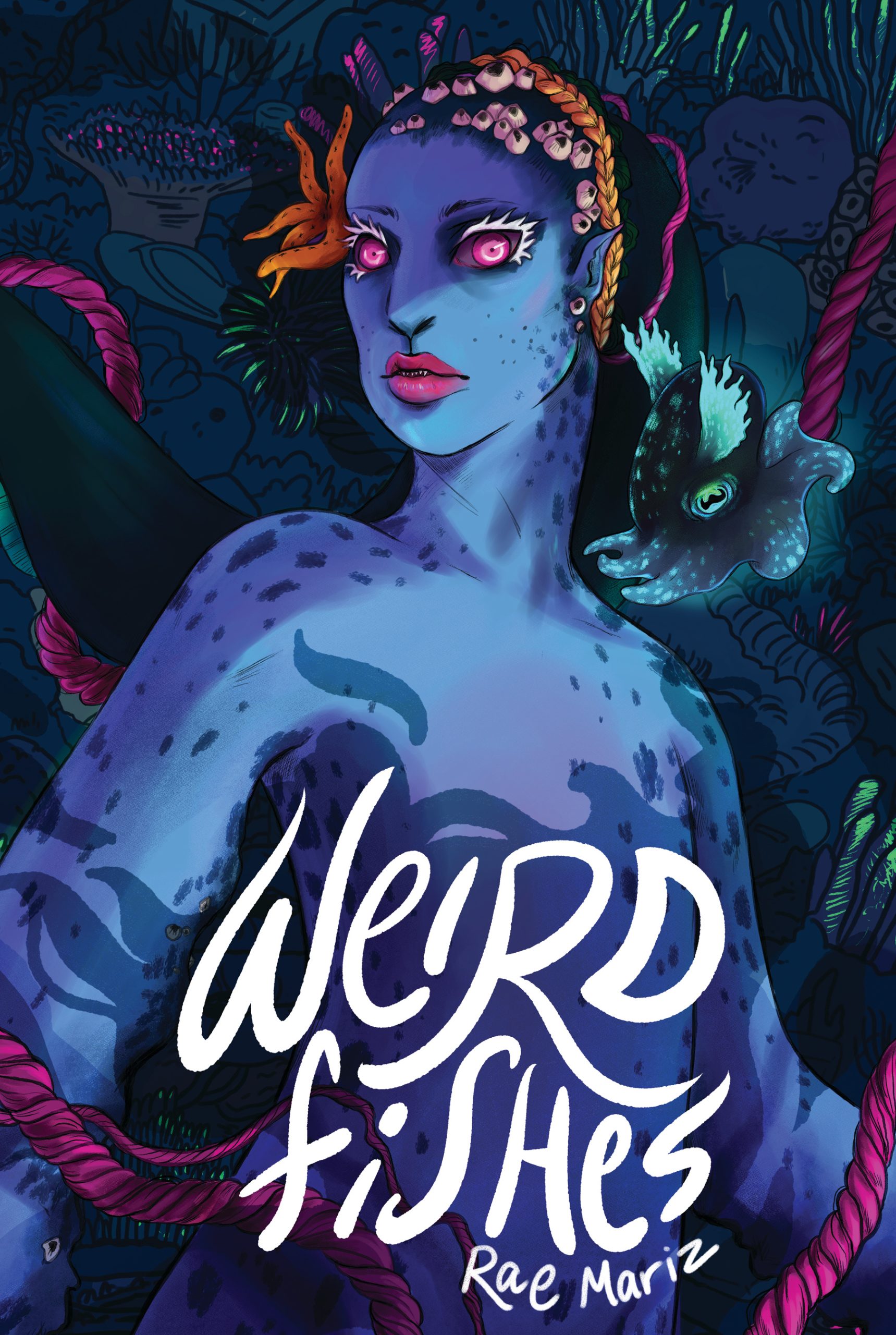
Describe the relationships with people you interview.
It ranges from one interview and some thanks to keeping in touch for a long time. I’m always open to staying in touch and often will write to the author later if they have something new coming out. It’s getting harder and harder to only spotlight an individual author once, because notable writing about the ecological balance of our world is transformational, and this sea change has authors creating new stories over time.
Have you met any authors in person?
Yes, I met author Katie Welch a long time ago when I learned she did tree-planting along with Charlotte Gill, who wrote the excellent tree-planting memoir, Eating Dirt. That was years ago, but since that time we’ve gotten together a few times, including one Christmas for coffee and another time at an eco-fiction stage at Word Vancouver. I also worked with author Claudia Casper, who wrote The Mercy Journals, and poet Stephen Collis, mentioned in my Writers and Big Oil feature, at the same stage. Stephen and I, however, went further back, as we did a few 100,000 Poets events in Vancouver, dating all the way back to my first days in Canada, over a decade ago.
What do you struggle with the most about promoting your site?
The biggest struggle has always been that I’m a small fish in a big sea. I am indefinitely paused at Twitter and am no longer on Facebook or Instagram. I know these are go-to places for trying to get attention for your work, but I refuse to support corrupt billionaires, even with my presence on their platforms. So, that leaves few other places to promote my work. I use Mastodon, and I appreciate many things about it and it’s slightly more engaging than Twitter, but I’m less and less inclined to spend much time on social media. I also began a Rewilding Our Stories Discord with another woman a few years ago, which has been an engaging community for discussion at times. It’s on-topic, and we built it as a safe place to discuss our work and what stories we liked. Other than that, I create a monthly newsletter, which always has new sign-ups.
What book(s), in this series, have you read more than once?
I was blown away by a few books, which I have read more than once. One is Pola Oloixarac’s Dark Constellations. It moved my inner 1980s nerd and love for plants and animals, all at once. Pola said:
Dark constellations were the way the Incas named and organized their astronomic exploration of the night sky. In the southern hemisphere, unlike the North, the dark spaces between the stars are much wider: interestingly, the Incas built their characters and stories as written inside the dark spaces, and not around the lights dots of the stars like the Western tradition. -Pola Oloixarac
The journey of reading this novel was sort of wild the entire way, so I had to read it again later.
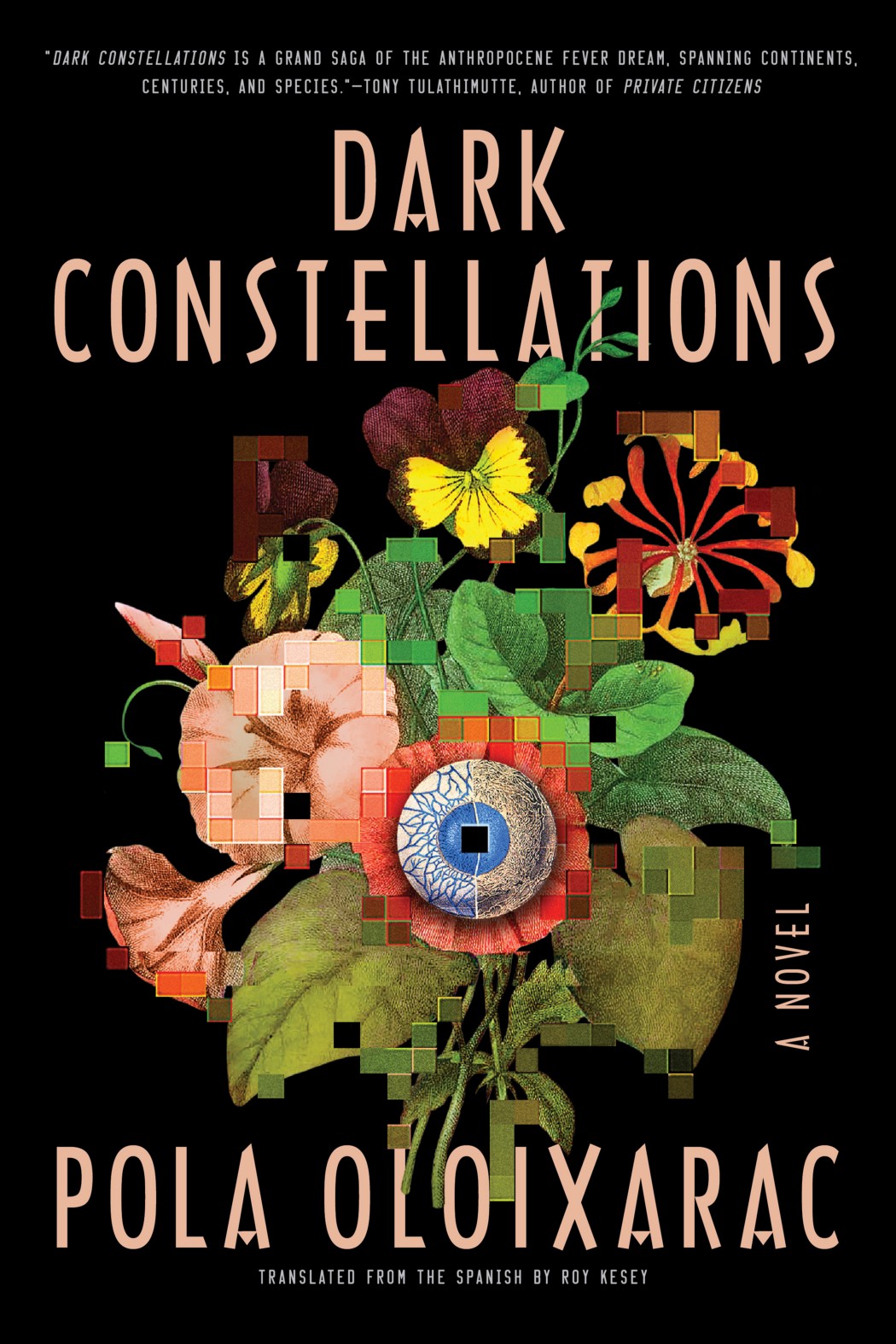
I also thoroughly enjoyed and couldn’t stop talking about Christiane Vadnais’ Fauna, a collection of noir stories inspired by the Arctic and “atmospheric forests in the Québec province”. I still go back and read some of those stories. They, to me, define the heart of eco-fiction: wild and breathtaking, weird and mysterious, creative but thoughtful about our natural world. Another book I’m on my second read now is Venetia Welby’s Dreamtime, which takes place in Japan and is a must-read in my opinion. What all of these books have in common is that they’re so well-paced, intelligent, mysterious, palpable, with interesting characters, poetic, and, at times, even weird or at least beautiful, in their descriptions of surrounding flora and fauna.
What is your reaction when you see a book you’ve spotlighted in a bookstore?
I sometimes turn it facing outward to draw more attention!
Confess your reading quirks.
As my friends know, I’m a big fan of the ecological weird; in fact, I experimented in writing in the genre. My experiment never took off, even though pre-print it received three really great reviews. I was reading such novels and short stories before I ever put a name to them (some also refer to the genre as ecological uncanny). It wasn’t really until I started following Jeff VanderMeer and his books that it came more clear to me that this was a thing. Other than chatting with Jeff back in 2016, I’ve only had a couple other examples of the weird in my interview series (Marian Womack and Dennis Mombauer). Early examples in this genre include Algernon Blackwood’s “The Willows”, Luigi Ugolini’s “The Vegetable Man”, Michael Bernanos’s “The Other Side of the Mountain”, and Michel de Ghelderod’s “A Twilight”. Part of it is that I just really love weird stories and always have. Not jump scares or any of that, but the strangeness of our human nature and non-human nature. Anything that is off-key, unsettling, and mind-bending intrigues me. I also think it’s a great way to explore ecological worlds because there’s a lot of unknowns and species we don’t know a lot about, like VanderMeer explained, and places, like deep in the ocean, that aren’t easy to explore and understand.
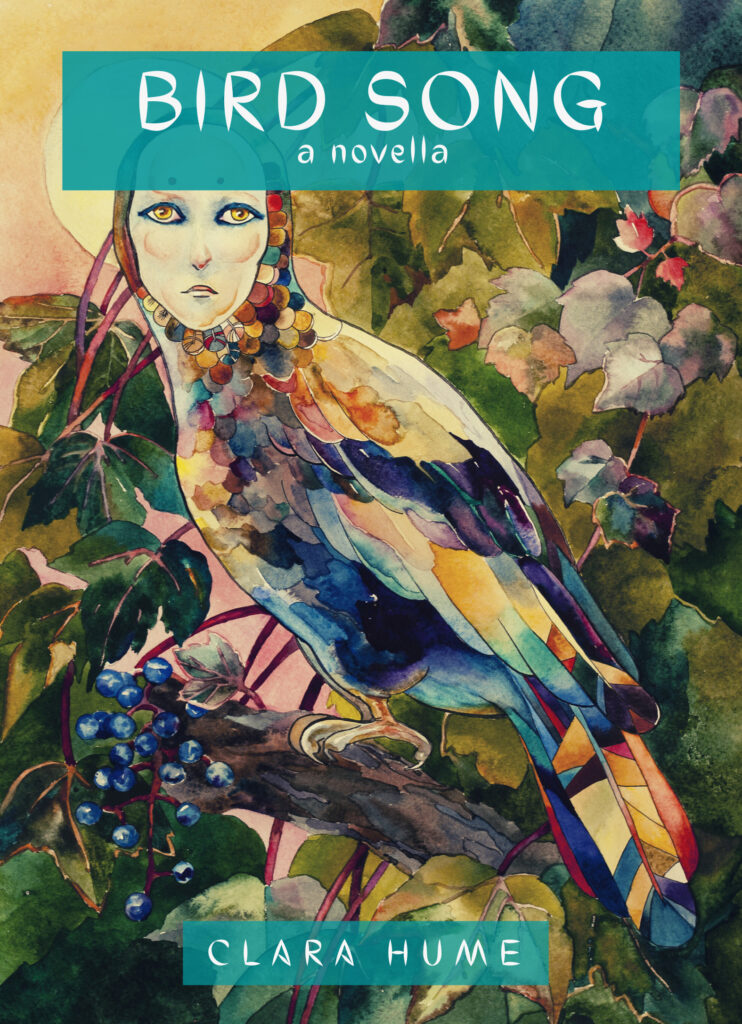
Describe the perfect library you could build in your house.
We moved to Nova Scotia from British Columbia almost three years ago, and I could not bring all my books. We allowed ourselves to ship just a few boxes out and didn’t ship any furniture. I packed only a crate of books to ship. When we moved here, we built a bookshelf to put in my office. I’ve also tried to re-buy many books I used to have, though some now are in e-book only. I don’t spend a lot of money, but I do buy books each month. Our one bookshelf is full now. We need a couple more, but I think I can rearrange the office to have one wall of just bookshelves. In fact, when I was growing up, my parents had beautiful dens with floor to ceiling bookshelves (see where I got this from?).
Has the series been noted elsewhere?
Yes. Artists & Climate Change reran many spotlights under a series there called “Wild Authors” and made me a core author. Because they were affiliated with The Center for Sustainable Practice in the Arts (CSPA), the CSPA also reran some of my interviews. Artists & Climate Change is on pause and isn’t posting new content at the moment, but as far as I know, they are keeping the site up. The beautiful Italian magazine, ZEST Letteratura Sostenibile, has also translated some of my articles. I’ve also met several people who found this site and have invited me to guest-post elsewhere, such as Impakter, Chicago Review of Books, SFFWorld.com, and ClimateCultures.net. I’m also a member of Nova Scotia’s Ecology Action Centre and a volunteer editor and writer there.
End of interview!
I hope you’re enjoying this global literature series and will stick around for future posts. I’m excited for the next ten years.